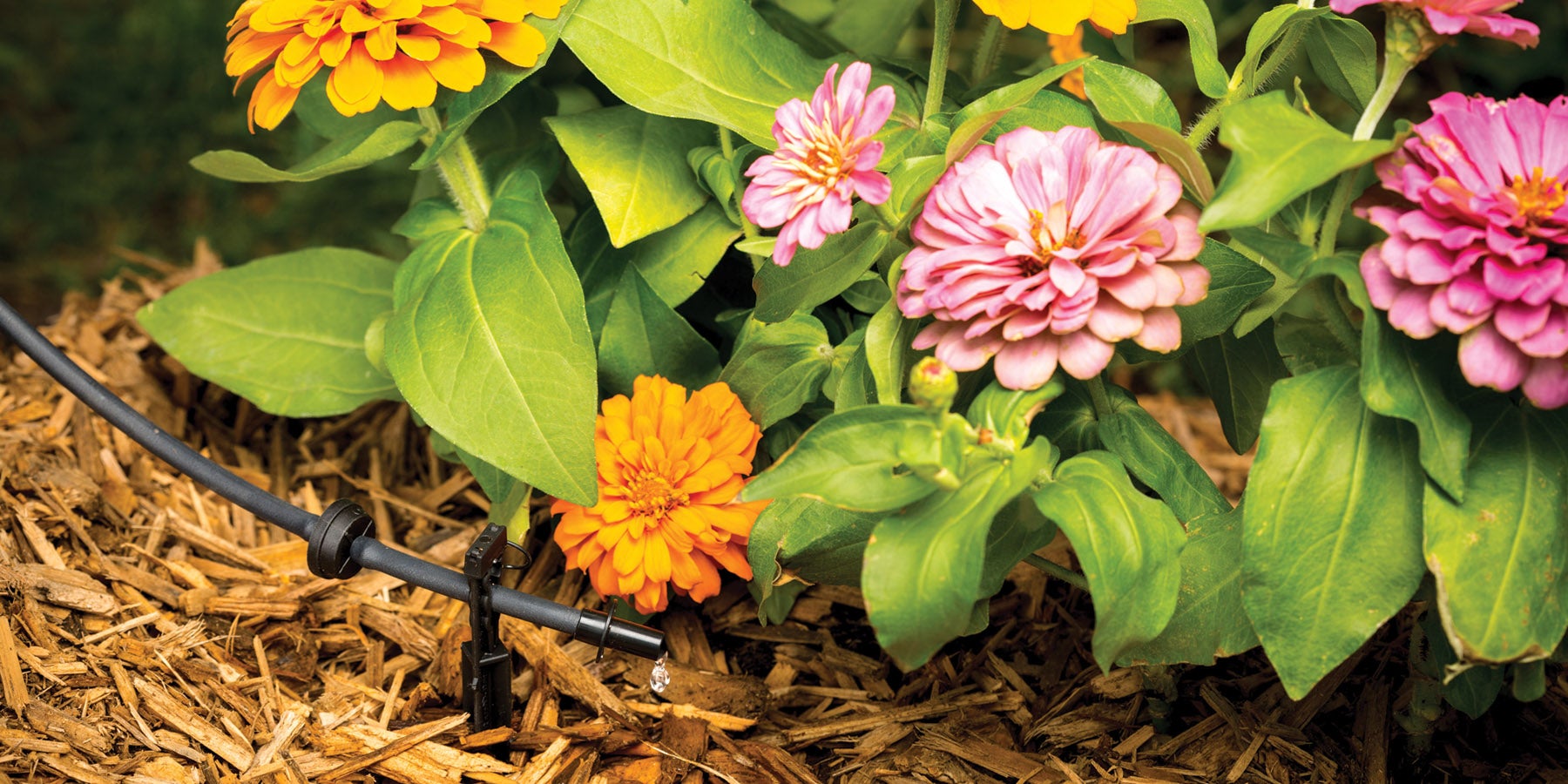Drip Irrigation: Your (not so) Secret Weapon Against Garden Pests and Diseases

Have you ever wondered why some gardens boast lush, vibrant growth while others struggle with constant pest invasions and diseases? The answer could be simpler than you think — drip irrigation. This unassuming technology can have a big impact on how you care for your plants and offer a strategic edge in the battle against garden nuisances.
Why Drip Irrigation Matters
Drip irrigation is more than simply another way to water your plants. It embodies the Intelligent Use of Water™, Rain Bird's guiding philosophy, which involves delivering precisely what your plants need, exactly where they need it. This method is not only efficient but also a proactive approach to minimizing the conditions that pests and diseases thrive on.
Understanding Drip Irrigation
Drip irrigation is a watering system that delivers water directly to the roots of plants through a network of tubes and emitters. This targeted approach minimizes water waste and ensures that plants receive the necessary moisture without overwatering.
Tackling Your Garden Challenges
Controlling Pests
Excessive moisture is a haven for pests and a common cause of infestations. Because drip irrigation focuses water delivery directly to the roots, leaves and stems stay dry, discouraging pests that are attracted to damp foliage, effectively reducing their presence in your garden.
Taming Weeds
Traditional watering methods often involve spraying water over an entire area, including weeds. Drip irrigation targets only the base of plants, reducing weed growth and saving time on weeding.
Controlling the Spread of Diseases
Fungal diseases like powdery mildew and leaf spot thrive in moist environments. Drip irrigation reduces leaf wetness, a primary factor in the development of these diseases, by delivering water directly to the soil.
Reducing High Water Usage and Costs
Traditional irrigation methods often result in significant water wastage due to evaporation and runoff. Drip irrigation can reduce water usage by up to 80% compared to traditional watering methods allowing plants to utilize nearly all the water applied, saving water and money.
The Mechanics of Drip Irrigation
The wide variety of available components, including tubing, connectors, and an array of emitters, makes a drip irrigation system easily adaptable for any garden layout, from row crops to raised beds to hanging flower baskets.
Setting up a drip irrigation system is relatively simple and can be customized to fit any garden size. Here’s a basic guide to get you started:
- Connect to a Water Source: Your drip system can be connected to a standard hose faucet. Turn the water on and off manually to control your irrigation cycles, or add an automatic timer, like Rain Bird's Premium Hose End Timer, for consistent watering at pre-set intervals.
- Plan Your Layout: Assess your garden and decide where your plants need water the most. Then, connect your tubing to ensure that it reaches all the plants.
- Choose the Right Components: Some plants may require more water than others. Based on your plant's water needs, select from Rain Bird's wide array of drip components, including emitters, bubblers, micro-sprays, and emitter tubing to tubing for plantings from containers to flower beds.

Tips for Maintaining Your Drip Irrigation System
To ensure your drip irrigation system continues to operate efficiently, follow these maintenance tips:
- Inspect Regularly: Check the system for clogs or leaks and clean or replace filters and emitters as needed.
- Adjust for Weather: Modify the watering schedule based on weather conditions to prevent over or under-watering.
- Winterize the System: In colder climates, drain the system before winter to prevent damage from freezing. Remember to disconnect any timers from outside hose faucets and bring them indoors.
Additional Tips for Using Drip Irrigation
To fully harness the power of drip irrigation against garden pests and diseases, here are a few additional tips:
- Use mulch: A layer of organic mulch can further reduce moisture levels in your garden and discourage pests from taking up residence.
- Monitor soil moisture: Regularly check the moisture levels in your garden to ensure that you are not over or under-watering. Adjust your drip irrigation system accordingly.
- Start with a kit: The wide variety of drip components can be daunting. Fortunately, Rain Bird offers several drip irrigation kits that bundle all the components you might need for common drip irrigation applications, making it easy to get started.
Implementing drip irrigation can deter pests and diseases while conserving water. Explore Rain Bird’s range of drip irrigation products to find the perfect system for your garden, and visit our website for more tips on sustainable gardening practices.
